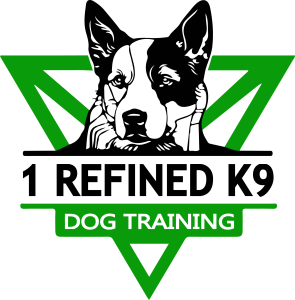Dog Bloat Timeline: Symptoms, Causes, and Emergency Care
As a dog owner, knowing about dog bloat is key. It includes symptoms, causes, and emergency care. Dog bloat, or gastric dilatation-volvulus (GDV), is very dangerous and needs quick help.
The timeline for dog bloat can move fast. Spotting the signs early is vital to save your dog. 1 Refined K9 Dog Training Call them at 386-478-9584 for expert training advice.
Understanding Canine Bloat: A Life-Threatening Emergency
Canine bloat is a serious issue that can happen to any dog, no matter the breed or size. It’s vital to know the signs of dog bloat because time is of the essence. The timeline of bloat in dogs can be hard to predict, and knowing the bloat in dogs stages is key to giving the right care.
This condition happens when the stomach gets filled with gas. It expands and might twist. Symptoms include vomiting, restlessness, and a swollen belly. Large and giant breeds are more at risk because of their deep chests.

Knowing the risk factors and which breeds are more likely to get bloat can help prevent it. Feeding your dog smaller meals more often can lower the risk. If you think your dog has bloat, call a vet right away. 1 Refined K9 Dog Training, a trusted training service.
When dealing with canine bloat, keep these points in mind:
- Watch your dog’s behavior and health closely
- Spot the early signs of bloat
- Get your dog to a vet quickly
The Complete Dog Bloat Timeline: From First Signs to Crisis
Knowing the dog bloat timeline is key to acting fast and getting vet help. The dog bloat symptoms can get worse quickly. It’s vital to spot the signs at each stage.
The timeline starts with vomiting and restlessness. Then comes abdominal distension. Finally, the crisis point where a dog’s life is in danger.
Grasping the canine bloat progression helps you act quickly and get vet care. Important points in the dog bloat timeline include:
- Initial symptoms: vomiting, restlessness, and abdominal distension
- Progression to crisis: rapid heartbeat, pale gums, and collapse
- Importance of immediate veterinary care
By knowing the dog bloat symptoms and canine bloat progression, you can protect your dog.
Early Warning Signs of Bloat in Dogs
Knowing the early signs of bloat in dogs is key to saving their life. As a dog owner, it’s vital to recognize the signs of dog bloat. These signs can quickly turn into a serious emergency if not addressed.
Look out for physical symptoms like vomiting, a swollen belly, and restlessness. These signs show your dog is uncomfortable and might get worse. Also, watch for changes in behavior, such as pacing, whining, and loss of appetite. These are warning signs that should not be ignored.
In the first 30 minutes, act fast and get your dog to a vet. If you think your dog has bloat, call your vet or an emergency clinic right away. Refined K9 Dog Training suggests calling 386-478-9584 for help. By spotting these signs early and acting quickly, you can prevent a serious situation and help your dog recover.
Immediate Actions When You Suspect Bloat
If you think your dog has bloat, act fast. Call your vet or an emergency clinic right away. Try to keep your dog calm and comfy while you wait. But, don’t try to treat them at home, as it could make things worse.
Look out for signs like vomiting, retching, and a swollen belly. If you see these in your dog, act quickly. Bloat can be very serious and needs vet help fast. Treatment might include surgery, medicine, or other steps, based on your dog’s health and how bad it is.
Advanced Stages and Complications
As bloat in dogs stages get worse, it can cause serious problems. These include organ failure and effects that spread throughout the body. If not treated, dog bloat emergency can lead to heart stop, kidney failure, and breathing trouble. Knowing the advanced stages of bloat is key to preventing it and getting your dog help fast.
In the later stages, gastric torsion can happen. This is a serious problem that needs surgery right away. The sooner your dog gets treatment for dog bloat, the higher their chance of living. Knowing how time affects survival can help you make the best choices for your dog.
- Organ impact and systemic effects
- Gastric torsion and the need for surgical intervention
- Time-based survival rates and the importance of prompt treatment
By understanding the advanced stages and complications of bloat, you can protect your dog’s health and happiness.
Prevention Strategies and Risk Management
As a dog owner, knowing the dog bloat symptoms is key. Taking steps to prevent it is crucial. Understanding how canine bloat progression works and knowing the signs of dog bloat can save your dog’s life.
To lower the risk of bloat, feed your dog a balanced diet and don’t overfeed. A balanced diet helps avoid digestive problems that can lead to bloat. Also, regular exercise helps digestion and lowers bloat risk.
Here are some prevention strategies to consider:
- Feed a high-quality, balanced diet
- Avoid overfeeding and limit treats
- Provide regular exercise and mental stimulation
- Monitor your dog’s behavior and watch for signs of dog bloat
For professional dog training, consider reaching out to 1 Refined K9 Dog Training at 386-478-9584.
Conclusion: Acting Fast Saves Lives
Acting quickly is key when dealing with dog bloat. Knowing the symptoms and timeline can save your dog’s life.
Every minute matters when treating dog bloat. Quick vet care can be the difference between life and death.
